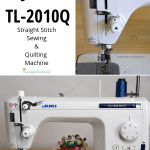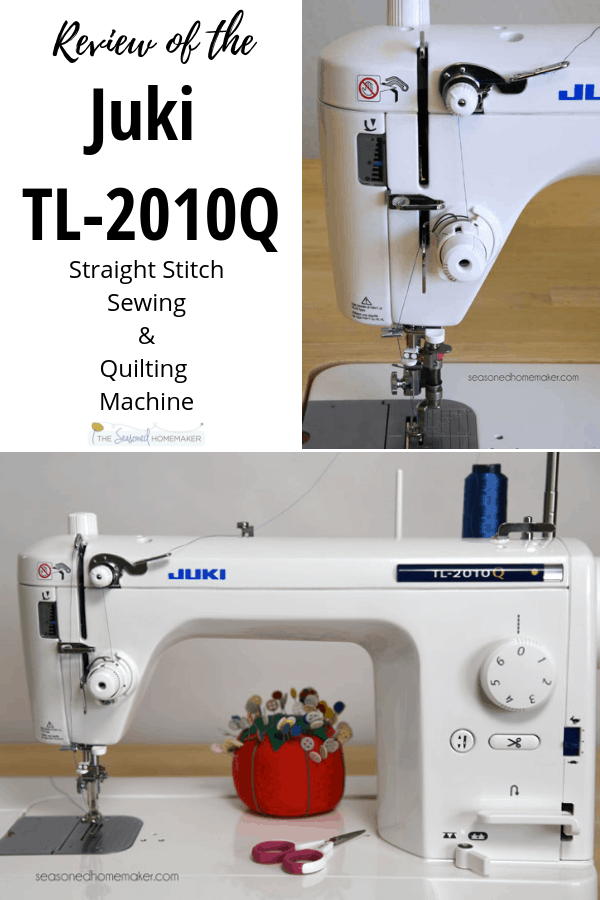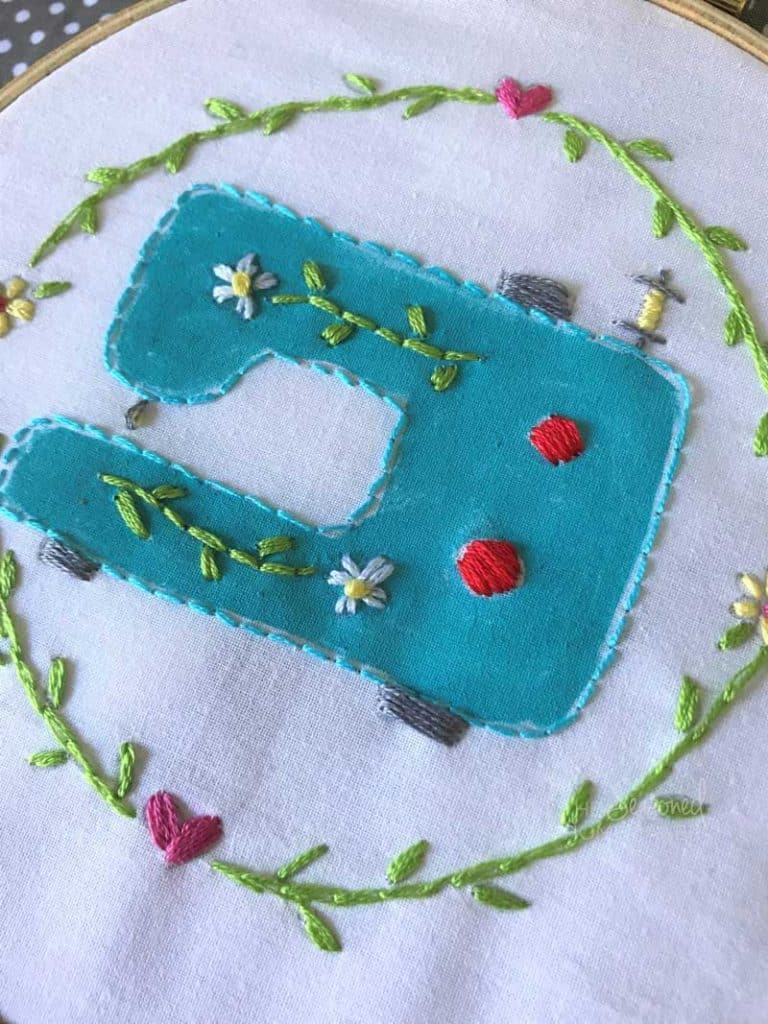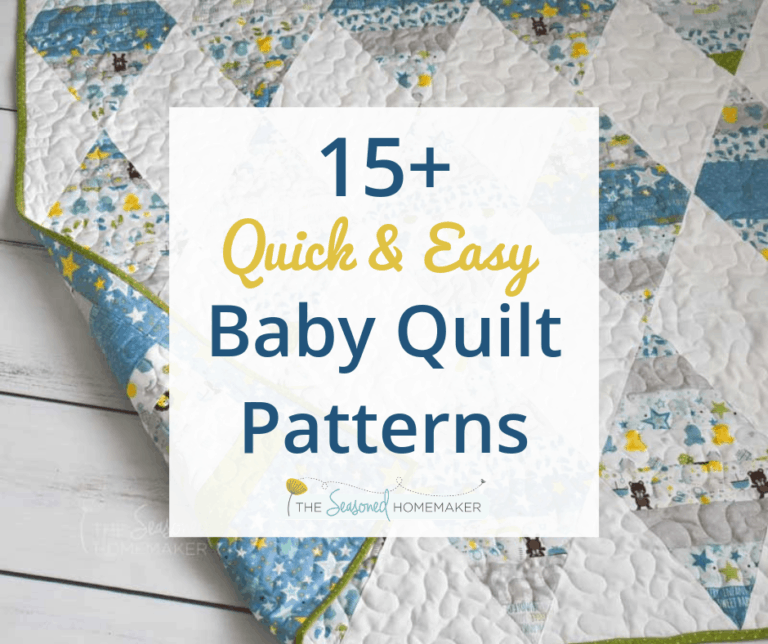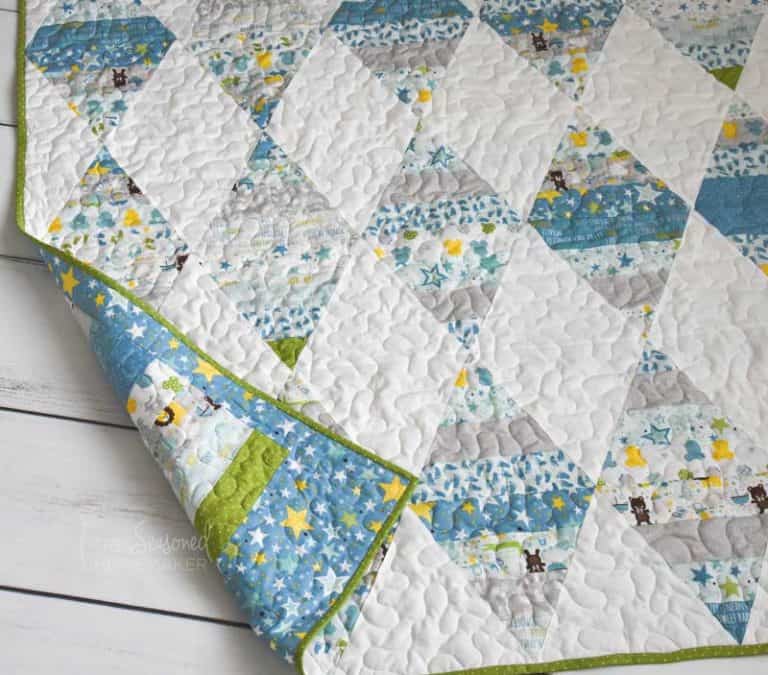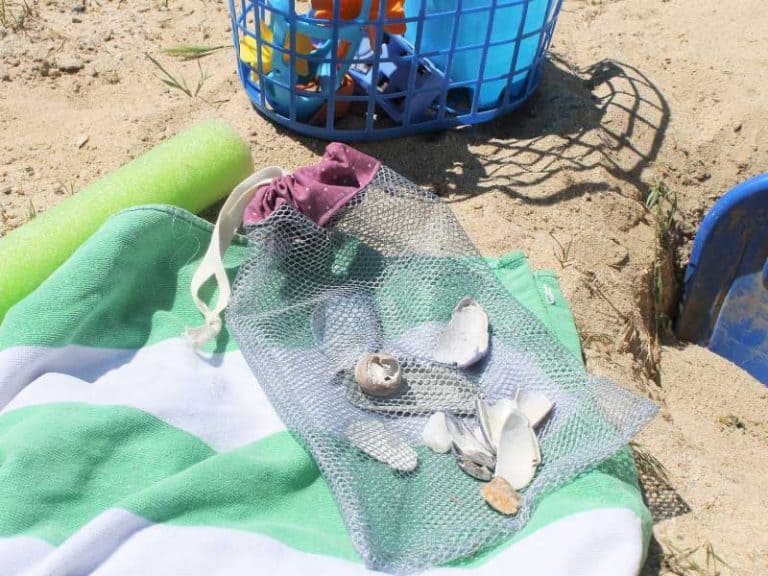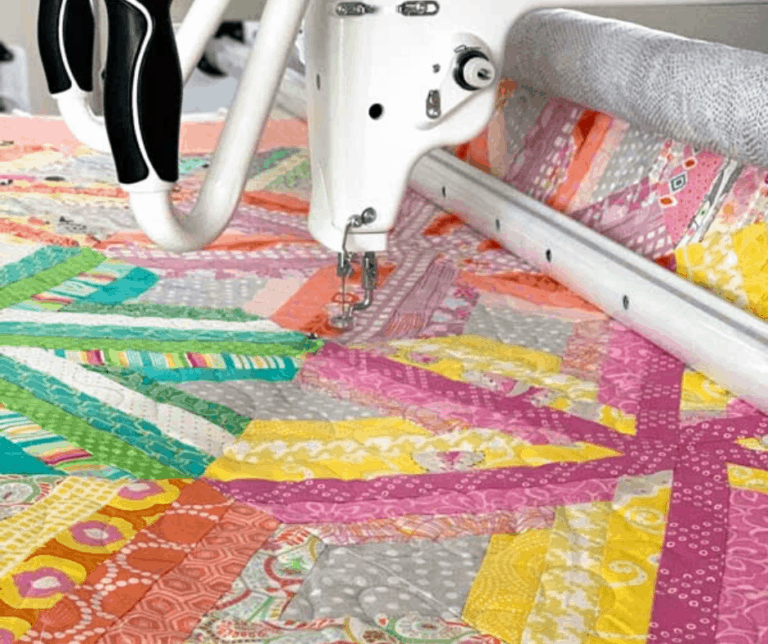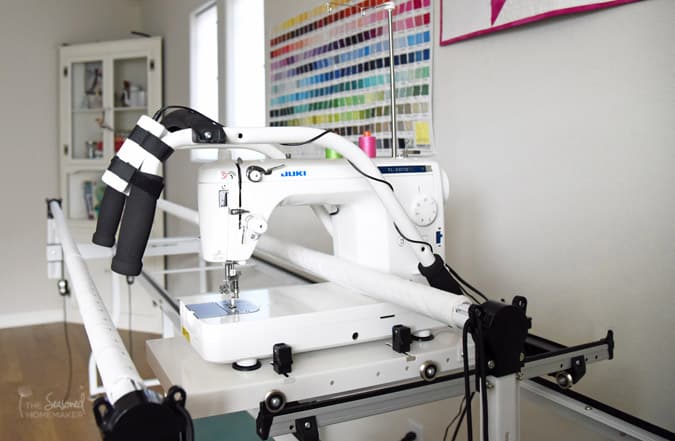Review of the Juki TL-2010Q
This post may contain affiliate links which won’t change your price but will share a commission.
Inside: Review of the Juki TL-2010Q
This review of my Juki TL-2010Q sewing machine is a little late, but I wanted to sew on the machine for a bit before I gave an honest review. Of course, there’s always a little story that goes along with a review.
For several months, I debated back and forth about purchasing a Juki TL-2010Q sewing machine in order to expand my quilting skills. I tested it twice in local stores as well as saw it demonstrated at Quilt Market. For the most part, I was extremely impressed with the machine and how it was totally designed for quilters.
I emailed and called friends who owned this machine and asked their overall opinion. After all of my research and questions I knew that the Juki TL-2010Q would be an excellent choice for me as a new quilter. In late December, I finally made the decision to purchase this machine.
Do I Really Need Another Machine?
First, I thought I’d talk a bit about why I would need a machine that is specific to quilting when I own two perfectly perfect Bernina’s that can do basically the same thing.
The main reason is best illustrated in the following photos. I’m using a large Mason jar to show the differences in size so you can see where I gain the most benefits from the new machine.
In this image of my Bernina notice how low the harp and needle space are. In order for me to see what I’m sewing when free motion quilting, I have to really hunch way over to have any sort of visibility.
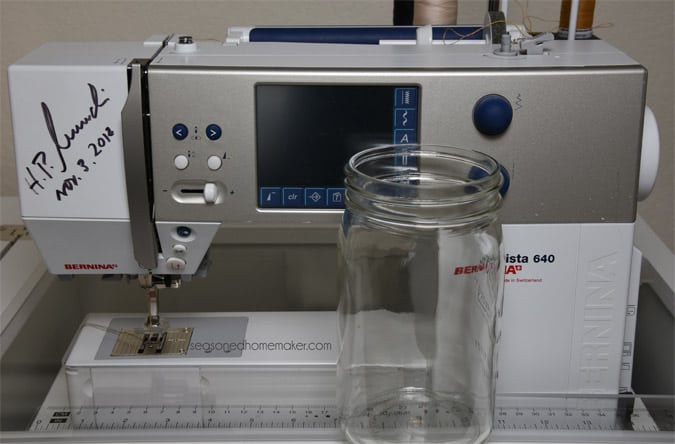
This image shows how small the harp area is on the Bernina. While perfectly suitable for most sewing projects, free motion quilting can be a real challenge.

One of the main reasons I purchased the Juki is visibility for both piecing a quilt as well as free motion quilting. Notice how much more height the Juki has compared to the Bernina.
The visibility on the Juki is amazing and it’s easy to see why this makes it so attractive. I immediately saw a difference in my ability to free motion quilt because I have way more control when handling my quilting projects.

The harp space on the Juki is more than adequate for my purposes. It allows me to work well with most size quilts and have plenty of room to maneuver the quilt.
I know that there are lots of choices with high-end machines that have larger harp areas, but the cost compared to the Juki is roughly 10 times more ~ which made the Juki the best value for me. Personally, I did not think I could justify on any level spending over $10,000 on a sewing machine {although I’d do it in a heartbeat if money were no object)!
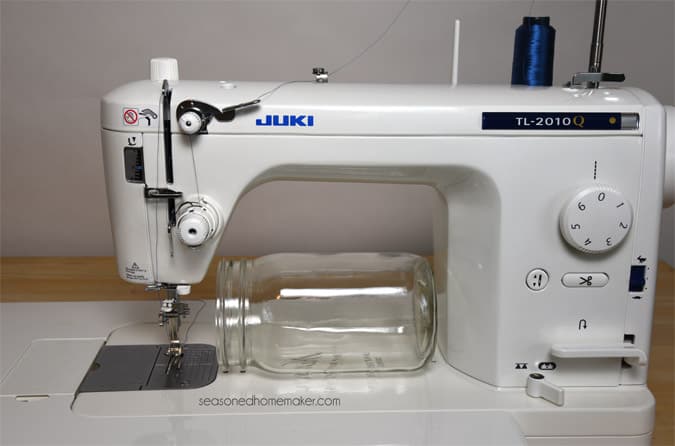
The Details
Now for the nitty gritty details. The Juki is a single-needle, lock stitch, high performance sewing machine. What does that mean? The machine only sews straight stitches – however, they are excellent straight stitches that don’t tangle or get bird’s nests on the under-side. It has a super-fast motor similar to a commercial machine.
When Juki designed this machine they put things on it that simplify and speed up quilting. My favorite features are the needle up-needle down, speed control (see that little rabbit on the right!), and the thread cutter which is engaged when you rock your heel back on the foot pedal!
So, here’s where the real benefits to these features shine. When piecing a quilt you literally never have to stop and cut anything. Just rock your heel back and the thread cuts, then on to the next piece. While I have a similar feature on my Bernina, this one is really made for piecing. It’s fast and efficient.
Another huge difference is the way the needle and bobbin sit. It is designed like a commercial machine with the bobbin placed on the left. Notice the hinged area where the bobbin would get inserted. Rather than being in front of the needle, it’s facing the left side of the machine.
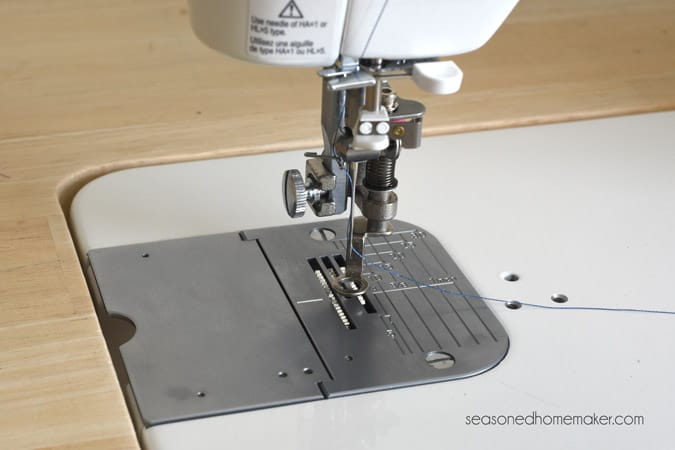
And that’s not all that’s different. The needle threads from left-to-right rather than front-to-back which is similar to industrial machines. Combined with the straight-stitch only feature; this means secure, even stitching.
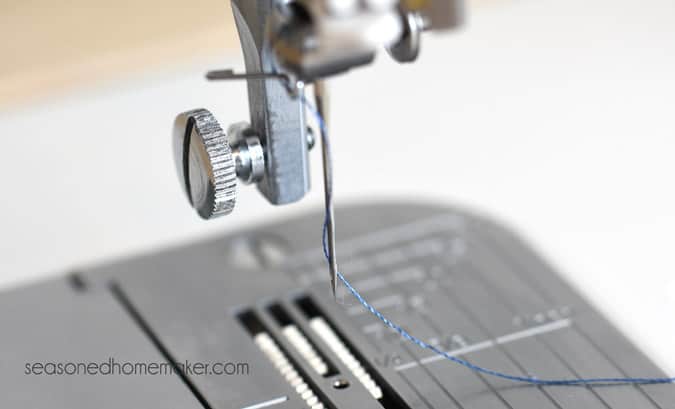
Another difference is the way you feed the thread. Notice how it loops over and under before going through the tension dial. I can use large spools of thread on the telescoping thread holder and get even stitches that never break.
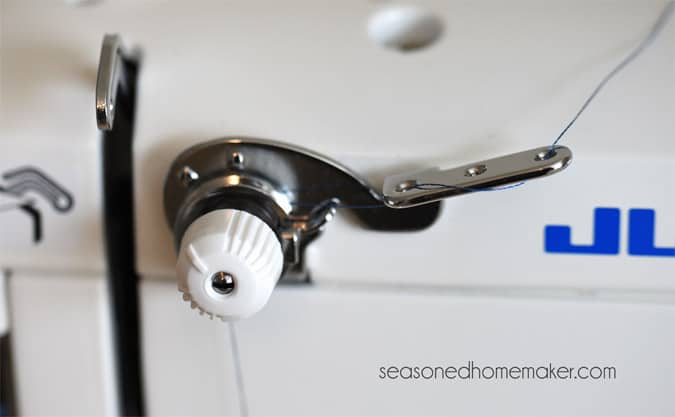
So, not everything is sunshine and lollipops with this machine. When doing my research I noticed lots of people complaining about the lighting. This photo tells it all. It’s kind of a weird spotlight which makes it hard to see well.
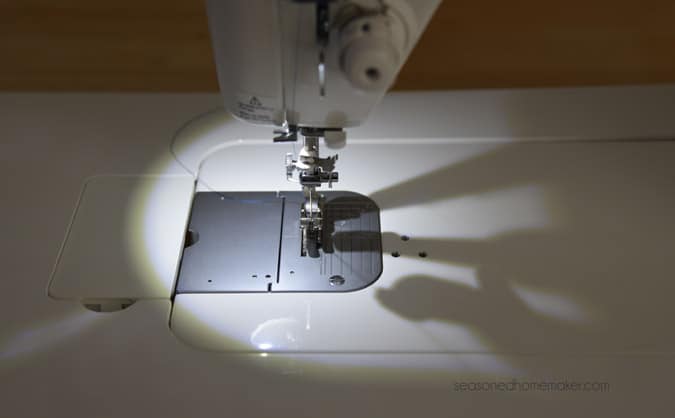
This was an easy remedy. I purchased a sewing machine LED lighting kit that under-mounts on the harp space. (affiliate) Notice how nice and even my lighting is now. The lighting kit is $30 and can be used on any sewing machine. It took about 5 minutes to attach and (as you can see) it is a total game changer for lighting.
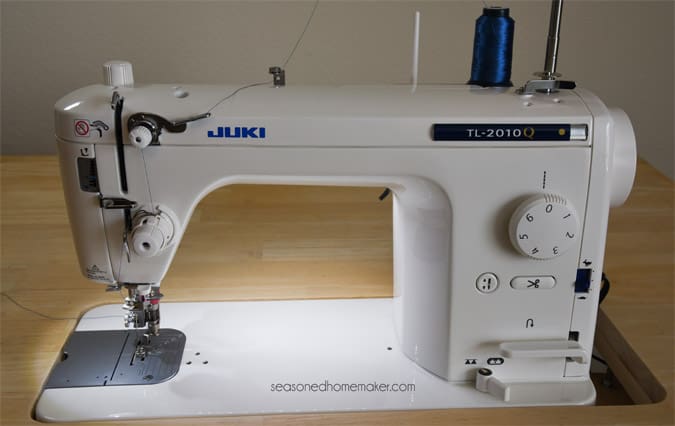
The Benefits
- The machine comes with several feet, including a walking foot. The feet are just so-so in my opinion. I am used to Bernina feet which are beyond excellent. While the Juki feet are perfectly adequate, they could be improved. Nevertheless, they do not in any way hinder my ability to piece or quilt. I was told that some Janome feet will work with this machine, and I will probably check them out once I’m more proficient with my free motion quilting.
- Another reason I purchased this machine is the ability to attach it to a Grace quilting frame for longarm free motion quilting at a fraction of the cost of a longarm quilting machine. I can even purchase a stitch regulator to get even stitches. I have a friend who found a used Grace frame so I am keeping an eye out for one although I have no idea where I would put it. In the mean time I am able to practice free motion quilting sitting down because my husband converted a table into a very nice quilting surface. (see the above photo)
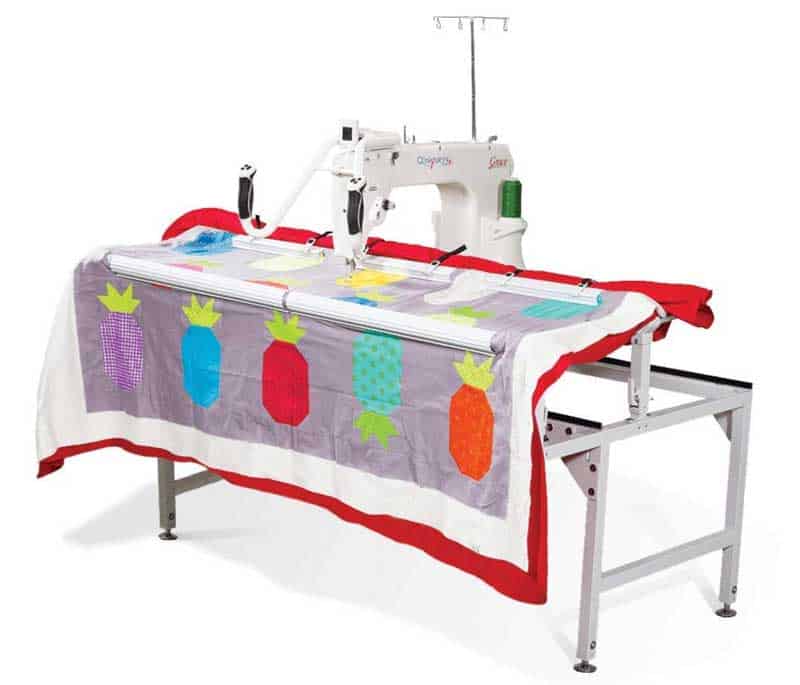
The ability to grow and add on as my quilting progresses is very attractive to me. I don’t know when or if I’ll ever progress to this level, but I liked the idea of being able to grow my skills for a reasonable price. With new longarm quilting machines in the $20,000 range and used ones about half that cost, I knew that having a long arm quilting machine was financially beyond my reach.
Until that day arrives, there are Craftsy classes for learning free motion quilting and some use the Juki TL-2010Q. By following along in the class I’ve been able to learn how to use my machine more effectively. I’m still learning and most of my work is what I would label as needs improvement. However, I understand that it takes a lot of practice to master free motion quilting. For now, this is an excellent class for newbies like me. (affiliate)
I purchased my Juki locally at the end of the year and got an awesome deal from a local dealer. I was able to negotiate a price of $800 and this was likely due to the fact that Christmas had passed and it was almost the end of the year. Since most dealers are small businesses that need to balance inventory, sales, and taxes this was a real win for both of us.
You can also purchase the Juki through an online dealer but the price won’t be as negotiable. I know one person who did this and she had a good experience although I always recommend you work with a local dealer if at all possible.
Finally, if you’re thinking about getting a similar machine I suggest you do your homework. I spent almost a year thinking about buying this machine. I tested it out three different times and then mulled it over again and again. During that time I would practice free motion quilting on my Bernina while considering how much use I would get from the Juki.
In the end, a mechanical machine that is designed for quilters seemed like the most cost-effective way to advance my quilting skills and still have plenty of money left over for buying fabric!


